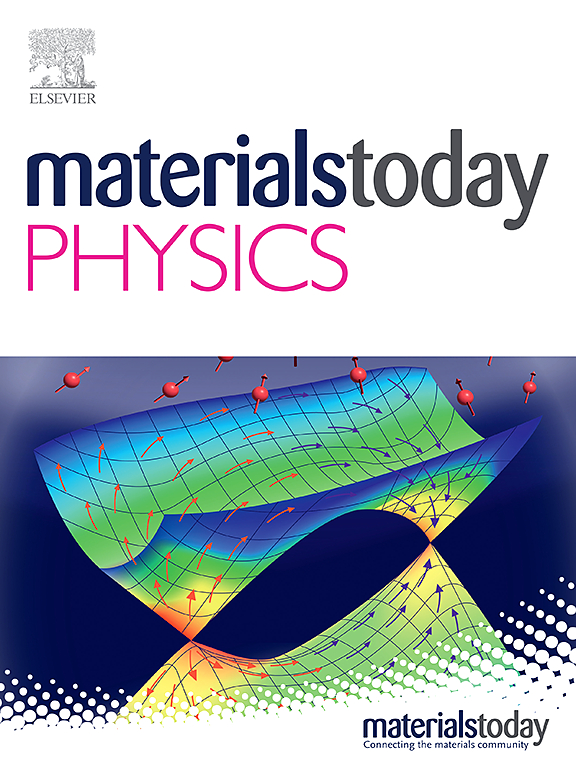利用MoSe2/FeSe的界面工程增强界面极化,实现高效的微波吸收
IF 9.7
2区 材料科学
Q1 MATERIALS SCIENCE, MULTIDISCIPLINARY
引用次数: 0
摘要
磁介质损耗和界面极化的协同效应通常被用来提高电磁波吸收器的性能。层状过渡金属硒化物由于其高衰减系数和类似层状花的独特形态,是电磁波衰减应用的有希望的候选物。通过水热反应构建双层核壳FeSiBCuNbZr@SiO2@TiO2非晶微球MoSe2/FeSe层,提高吸收剂的性能。MoSe2/FeSe壳层的构建大大改善了阻抗匹配,引入了异质界面,大大增加了界面极化损耗。特别是对于FST@MF-2,它在4.57 GHz处表现出优异的微波吸收性能,RLmin为- 62.06 dB。此外,该材料的有效吸收带宽(RL<-10 dB)在1.68 mm处可达到4.25 GHz。与完美电导体(PEC)相比,FST@MF-2的雷达截面(RCS)降低值可达26.64 dB m2(从5.22 dB m2降至-21.42 dB m2),有助于降低军事装备的RCS。本研究为设计非晶磁芯和多组分介电壳相结合的电磁波吸收器提供了有意义的参考。本文章由计算机程序翻译,如有差异,请以英文原文为准。

Enhancing interface polarization by interface engineering of MoSe2/FeSe to achieve efficient microwave absorption
The synergistic effects of magnetic-dielectric loss and interfacial polarization are commonly employed to enhance the performance of electromagnetic wave absorbers. Layered transition metal selenides are promising candidates for electromagnetic wave attenuation applications, owing to their high attenuation coefficients and the unique morphology resembling layered flowers. MoSe2/FeSe layers were constructed by hydrothermal reaction of double-layer core-shell FeSiBCuNbZr@SiO2@TiO2 amorphous microspheres to improve the performance of the absorber. The construction of the MoSe2/FeSe shells greatly improves impedance matching and introduces heterogeneous interfaces, which substantially increase the interface polarization loss. Especially for FST@MF-2, it exhibits excellent microwave absorption performance at 4.57 GHz with an RLmin of −62.06 dB. Furthermore, the effective absorption bandwidth (RL<-10 dB) of this material can reach 4.25 GHz with 1.68 mm. Compared with perfect electrical conductor (PEC), the radar cross-section (RCS) reduction value of FST@MF-2 can reach 26.64 dB m2 (from 5.22 dB m2 to -21.42 dB m2), which helped to reduce the RCS of military equipment. This work presents a meaningful reference for designing electromagnetic wave absorbers, achieved via the integration of amorphous magnetic cores and multicomponent dielectric shells.
求助全文
通过发布文献求助,成功后即可免费获取论文全文。
去求助
来源期刊

Materials Today Physics
Materials Science-General Materials Science
CiteScore
14.00
自引率
7.80%
发文量
284
审稿时长
15 days
期刊介绍:
Materials Today Physics is a multi-disciplinary journal focused on the physics of materials, encompassing both the physical properties and materials synthesis. Operating at the interface of physics and materials science, this journal covers one of the largest and most dynamic fields within physical science. The forefront research in materials physics is driving advancements in new materials, uncovering new physics, and fostering novel applications at an unprecedented pace.
 求助内容:
求助内容: 应助结果提醒方式:
应助结果提醒方式:


